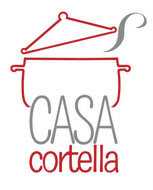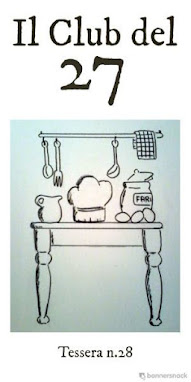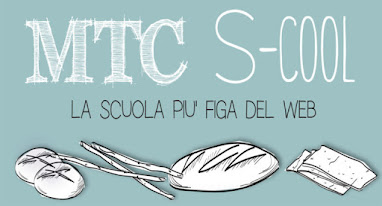Pav Bhaji: welcome to India!
Namaste
(नमस्ते)
Welcome to India, second stop of our long cultural & culinary tour of the new ABC journey.
I am very happy and proud to be the ambassador, as very fond of this people, its traditions and its food.
Not easy at all to make a summary in a few lines of this vast region, so many differences in everywhere. But we have three weeks time to spend in this country, enough to enjoy and share more than one recipe and living custom, and post after post we'll be able to enrich the cultural heritage of this great Asian country.
Should you like to join World Culinary ABC just have a look at all details and rules here, I will be very happy and honored to recieve your entries!
I am very happy and proud to be the ambassador, as very fond of this people, its traditions and its food.
Not easy at all to make a summary in a few lines of this vast region, so many differences in everywhere. But we have three weeks time to spend in this country, enough to enjoy and share more than one recipe and living custom, and post after post we'll be able to enrich the cultural heritage of this great Asian country.
Should you like to join World Culinary ABC just have a look at all details and rules here, I will be very happy and honored to recieve your entries!
India, officially the Republic of India (Bhārat Ganarājya), is a country in South Asia. It is the seventh-largest country by area, the second-most populous country with over 1.2 billion people, and the most populous democracy in the world.
Home to the ancient Indus Valley Civilisation and a region of historic trade routes and vast empires, the Indian subcontinent was identified with its commercial and cultural wealth for much of its long history. Four world religions—Hinduism, Buddhism, Jainism, and Sikhism—originated here, whereas Judaism, Zoroastrianism, Christianity, and Islam arrived in the 1st millennium CE and also helped shape the region's diverse culture. Gradually annexed by and brought under the administration of the British East India Company from the early 18th century and administered directly by the United Kingdom from the mid-19th century, India became an independent nation in 1947 after a struggle for independence that was marked by non-violent resistance led by Mahatma Gandhi.
Indian economy is the world's tenth-largest by nominal GDP and third-largest by purchasing power parity (PPP). Following market-based economic reforms in 1991, India became one of the fastest-growing major economies; it is considered a newly industrialised country. However, it continues to face the challenges of poverty, corruption, malnutrition, inadequate public healthcare, and terrorism. A nuclear weapons state and a regional power, it has the third-largest standing army in the world and ranks ninth in military expenditure among nations. India is a federal constitutional republic governed under a parliamentary system consisting of 29 states and 7 union territories. India is a pluralistic, multilingual, and a multi-ethnic society. It is also home to a diversity of wildlife in a variety of protected habitats.
India's coastline measures 7,517 kilometres (4,700 mi) in length; of this distance, 5,423 kilometres (3,400 mi) belong to peninsular India and 2,094 kilometres (1,300 mi) to the Andaman, Nicobar, and Lakshadweep island chains.
Major Himalayan-origin rivers that substantially flow through India include the Ganges and the Brahmaputra, both of which drain into the Bay of Bengal.
The Indian climate is strongly influenced by the Himalayas and the Thar Desert, both of which drive the economically and culturally pivotal summer and winter monsoons. The Himalayas prevent cold Central Asian katabatic winds from blowing in, keeping the bulk of the Indian subcontinent warmer than most locations at similar latitudes. The Thar Desert plays a crucial role in attracting the moisture-laden south-west summer monsoon winds that, between June and October, provide the majority of India's rainfall. Four major climatic groupings predominate in India: tropical wet, tropical dry, subtropical humid, and montane.
The Indian film industry produces the world's most-watched cinema.
Cotton was domesticated in India by 4000 B.C.E. Traditional Indian dress varies in colour and style across regions and depends on various factors, including climate and faith. Popular styles of dress include draped garments such as the sari for women and the dhoti or lungi for men. Stitched clothes, such as the shalwar kameez for women and kurta–pyjama combinations or European-style trousers and shirts for men, are also popular. Use of delicate jewellery, modelled on real flowers worn in ancient India, is part of a tradition dating back some 5,000 years; gemstones are also worn in India as talismans (from wikipedia).
India is a very wide country and food vary from region to region.
Therefore Indian kitchen is very rich and it's an amazing result of so many different regional kitchens, each peculiar and delicious.
In the North, with a temperate climate, breeding rams is very popular and lamb is cooked slowly in oven. Going to the South, passing through Delhi and Punjab, we find richer food: they eat chicken too, and ghee is mostly used. Bread is preferred to rice. On East coast, around Bengal Bay, fish is largely used, for sea and numerous rivers all around. Hot and humid climate helps palm tree grow easily and coconut is so often used in recipes.
On West coast, in Gujarat, most people are vegetarian and they largely eat vegetables and cereals as well as in Tamil Nada, at the very South.
In Goa and Malabar humid and tropical climate allows to grow coconut, banana, date palm trees, and fish and crustanceans are numerous.
In South India the foodstar is rice and steamed food is the most favourite. Quite all dishes are traditionally very hot, much more than in Northern regions.
India counts several and different races and religions, very influent about food, with rules to be respected. Muslims and Jews don't eat pork, while for Hindus and Sikhs beef is forbidden. Quite most Hindus are strictly vegetarians, but many include fish and crustanceans in their diet because they are considered harvest of the sea.
When you cook Indian recipes don't be afraid about how much spices or chili to put inside, be generous as you like, keep the recipe lighter if you like, or add some more ingredients if you need. As Indians say. it's your personal touch Hath ki bat that makes the difference!
And last but not least, tea, as India is one of the major producer in the world and Darjeeling is considered the world's finest tea, and almost all of it is exported.
Therefore Indian kitchen is very rich and it's an amazing result of so many different regional kitchens, each peculiar and delicious.
In the North, with a temperate climate, breeding rams is very popular and lamb is cooked slowly in oven. Going to the South, passing through Delhi and Punjab, we find richer food: they eat chicken too, and ghee is mostly used. Bread is preferred to rice. On East coast, around Bengal Bay, fish is largely used, for sea and numerous rivers all around. Hot and humid climate helps palm tree grow easily and coconut is so often used in recipes.
On West coast, in Gujarat, most people are vegetarian and they largely eat vegetables and cereals as well as in Tamil Nada, at the very South.
In Goa and Malabar humid and tropical climate allows to grow coconut, banana, date palm trees, and fish and crustanceans are numerous.
In South India the foodstar is rice and steamed food is the most favourite. Quite all dishes are traditionally very hot, much more than in Northern regions.
India counts several and different races and religions, very influent about food, with rules to be respected. Muslims and Jews don't eat pork, while for Hindus and Sikhs beef is forbidden. Quite most Hindus are strictly vegetarians, but many include fish and crustanceans in their diet because they are considered harvest of the sea.
When you cook Indian recipes don't be afraid about how much spices or chili to put inside, be generous as you like, keep the recipe lighter if you like, or add some more ingredients if you need. As Indians say. it's your personal touch Hath ki bat that makes the difference!
And last but not least, tea, as India is one of the major producer in the world and Darjeeling is considered the world's finest tea, and almost all of it is exported.
I have many Indian cookbooks, I love this kitchen, its spices and perfumes, some of which bought in India by a dear friend of mine who lived there for a while (and still work somehow), and she promised to take me there as soon as possible.
I also follow blog friends in India, and the Indian FBAI is twinned with our local AIFB, I belong to.
To begin the collection of Indian recipes I followed a recipe from Aparna's blog My Diverse Kitchen, she's also the founder of baking group We Knead to Bake.
I also follow blog friends in India, and the Indian FBAI is twinned with our local AIFB, I belong to.
To begin the collection of Indian recipes I followed a recipe from Aparna's blog My Diverse Kitchen, she's also the founder of baking group We Knead to Bake.
I love street food and believe that it's the direct expression of most real emotions and culinary traditions of a country. India too is part of this great stret food community, with stalls everywhere, so attractive and persistently fragrant.
Aparna says that if anyone ask an Indian what street food is his favorite, his most frequent response will be Bhelpuri, Panipuri and Pav Bhaji.
It seems that this specialty is born as lunch for the workers of a textile mill in Mumbai, convenient and easy to eat during their short break. Today has overcome its humble beginnings and can be found on the menu in most restaurants across the country, because it is a very easy dish to cook and serve.
The bhaji is a preparation of mixed greens with onions, tomatoes, potatoes and basic spices, very hot and red/orange colored: the vegetables are cooked and then mashed to give the consistency of a thick gravy, mashed type. It is usually served with chopped raw onion and fresh cilantro, a dash of lime juice and a generous dollop of butter, accompanied by the typical pav. To handle the spiciness of the dish, the trick is to eat a little raw onion in advance, so to low the impact of the overwhelming hot feeling in your mouth (but perhaps it would be sufficient to use less chili).
A local custom says that you have not eaten the real pav bhaji until you have it on the beach, where the beach is Chowpatty Beach in Mumbai.
Do not miss this video, where Vikas Kumar shows us how a street vendor (his stall is called Chandan Laxmi Pav Bhaji and Fast Food) prepare bhaji on this great iron skillet called Tava: speed and ability as he crushes and mixes vegetables are amazing. And that is Juhu Chowpatty Beach.
It seems that this specialty is born as lunch for the workers of a textile mill in Mumbai, convenient and easy to eat during their short break. Today has overcome its humble beginnings and can be found on the menu in most restaurants across the country, because it is a very easy dish to cook and serve.
The bhaji is a preparation of mixed greens with onions, tomatoes, potatoes and basic spices, very hot and red/orange colored: the vegetables are cooked and then mashed to give the consistency of a thick gravy, mashed type. It is usually served with chopped raw onion and fresh cilantro, a dash of lime juice and a generous dollop of butter, accompanied by the typical pav. To handle the spiciness of the dish, the trick is to eat a little raw onion in advance, so to low the impact of the overwhelming hot feeling in your mouth (but perhaps it would be sufficient to use less chili).
A local custom says that you have not eaten the real pav bhaji until you have it on the beach, where the beach is Chowpatty Beach in Mumbai.
Do not miss this video, where Vikas Kumar shows us how a street vendor (his stall is called Chandan Laxmi Pav Bhaji and Fast Food) prepare bhaji on this great iron skillet called Tava: speed and ability as he crushes and mixes vegetables are amazing. And that is Juhu Chowpatty Beach.
The pav (often called pao or pau in honor of the Portuguese inheritance) are sweet soft rolls baked in a row.
Then they take a couple, cut in half and crashed into the melted butter and served with vegetable sauce.
In Marathi pad means a quarter, and the name probably derives from the custom of serving pav bhaji accompanied by 4 sandwiches together.
But in Hindi it means feet, and another legend says that the dough for these buns, produced in huge quantities, was done with feet instead of hands, so to make enough for the huge demand.
In this video Nisha Madhulika shows us (in original language) how to make pav. Or you can follow English instructions in Cooking Shooking video.
Then they take a couple, cut in half and crashed into the melted butter and served with vegetable sauce.
In Marathi pad means a quarter, and the name probably derives from the custom of serving pav bhaji accompanied by 4 sandwiches together.
But in Hindi it means feet, and another legend says that the dough for these buns, produced in huge quantities, was done with feet instead of hands, so to make enough for the huge demand.
In this video Nisha Madhulika shows us (in original language) how to make pav. Or you can follow English instructions in Cooking Shooking video.
Laadi Pav
Serving 8 rolls:
250 g allpurpose flour
130/150 g warm milk
1 tbs extravirgin olive oil or softened butter
1 tbs honey or sugar
1 tsp salt
1 tsp dry yeast or 5 g fresh yeast
melted butter for brushing
250 g allpurpose flour
130/150 g warm milk
1 tbs extravirgin olive oil or softened butter
1 tbs honey or sugar
1 tsp salt
1 tsp dry yeast or 5 g fresh yeast
melted butter for brushing
Dissolve the fresh yeast in milk (for dry yeast follow instructions on the bag).
In a bowl pour flour and sugar and begin to knead, adding the milk little by little, oil (or butter) and salt at last.
It should be a very soft dough. Shape into a ball and let it rest in a greased bowl, covered, until doubled.
Then transfer the dough onto the working surface and divide in half, then into quarters and finally into eighths.
Roll each piece in a little ball and place to rest in a rectangular mold (lined with parchement paper) slightly spaced, covered with a damp cloth for about 30/40 minutes.
Bake at 200° for 10-13 minutes, should not darken much.
Once removed from the oven brush with melted butter and let cool on a rack.
The same word but with different pronunciation: Bhaji (pronounced bhaaji) means vegetable, while Bhaji (pronounced bhajji) means fritters, so be aware when you oder at the restaurant :-).
Vegetables' texture, usually mashed, may also be a little different, into small pieces if you like.
You can use the pav bhaji masala *, like the one I got from India, or make a mix such as in Aparna's recipe (I just did half and half). Usually a third of a teaspoon for every spice, but the amount is at your pleasure, as well as your favorite chili, more or less spicy.
You can use the pav bhaji masala *, like the one I got from India, or make a mix such as in Aparna's recipe (I just did half and half). Usually a third of a teaspoon for every spice, but the amount is at your pleasure, as well as your favorite chili, more or less spicy.
* spice mix as follows, in descending order: coriander - chili - mango -
cumin - iodized salt - fennel - cassia - ginger - black pepper - clove -
cardamom - nutmeg - caraway - star anise - mace
You need:
mixed vegetables
(carrot, cauliflower, beans, peas)
1 large potato
1 large onion, chopped
2 large tomatoes
1 teaspoon garlic powder
grated fresh ginger
extra virgin olive oil
turmeric
paprika
coriander
cumin
garam masala
fresh coriander
Steam carrot, cauliflower, beans and peas.
Blanch tomatoes, remove skin and cut into cubes.
Use a large wok: stir-fry garlic and ginger in a couple of tablespoons of oil, add chopped onion and cook over high heat until slightly translucent (if necessary add a little water so it does not burn).
Add tomatoes and cook until very soft. Mash well with a spoon.
Add the spice mix and cook over medium heat until the raw smell of them disappears.
Mash the vegetables with a fork or a masher until you have a puree and add it to the wok.
Season with salt, add half a glass of water and cook 5/10 minutes until well blended, adding a little more water if necessary.
Before serving, add a few tablespoons of melted butter and garnish with chopped fresh coriander.
How to serve pav bhaji: melt a couple of tablespoons of butter in a frying pan. Slice two pieces of the pav sideways and place both, cut sides down, on the melted butter and allow the pav to absorb the butter and brown slightly. Place the sandwich on a plate, add a few tablespoons of bhaji aside (even inside the sandwich) and serve with the remaining chopped onion, a few drops of fresh lime juice and a spoonful of melted butter.
Looking forward for your recipes till Nov., 16th.
Namaste
(नमस्ते)
La nostra raccolta indiana - Our Indian Collection
Salato - Savoury
Paneer, formaggio fresco
Navrathna Kurma, verdure con formaggio (paneer) fritto Cavolfiore al curry Gata da Plar
Pakora di verdure tritate con chutney di cipolla
Fr@
Mughlai chicken, pollo speziato con mandorle
Mushroom & Chicken Masala, Masala di funghi e ceci
Chilli Chicken, pollo alle spezie e peperoni
Chicken Tikka Masala
Lucia
Spiedini paneer tikka
Paneer tikka
Marinata vindaloo
Spezzatino di manzo al vindaloo
Marta
Fusi di Pollo con Menta e Coriandolo in Stile Kerala Indiano
Sweet Potato Saag Aloo - Curry Indiano di Patate Dolci e Spinaci Morena
Navrathna Kurma, verdure con formaggio (paneer) fritto Cavolfiore al curry Gata da Plar
Pakora di verdure tritate con chutney di cipolla
Fr@
Mughlai chicken, pollo speziato con mandorle
Mushroom & Chicken Masala, Masala di funghi e ceci
Chilli Chicken, pollo alle spezie e peperoni
Chicken Tikka Masala
Lucia
Spiedini paneer tikka
Paneer tikka
Marinata vindaloo
Spezzatino di manzo al vindaloo
Marta
Fusi di Pollo con Menta e Coriandolo in Stile Kerala Indiano
Sweet Potato Saag Aloo - Curry Indiano di Patate Dolci e Spinaci Morena
Biryani vegetariano
Tamara
Cheppankizhangu/Seppankilangu Varuval - Taro root roast - Radice di taro al forno
Cristina
Indian-style Spicy Chicken
Pakora
Chicken Biryani
Eloisa
Tandoori Murghi
Jhinga Tandoori
Carla Emilia
Phool Kopir Dalna
Pinko
Zuppa Mulligatawny
Pollo al tikka masala con riso thay e pomodori piccantini
Elena
Merluzzo con Fish-Curry Masala
Sara
Dahl Indiano e Basmati alla Curcuma
Sabrina
Punjabi Aloo Chole
Rosa Maria
Samosa alle verdure
Resy
Besan ka Cheela e Raita alla menta
Manuela
Aloo Tikki - Polpette di patate e piselli - Potato & Pea Patties
Khiceri
Terry
Potoler Dolma
Sanhita
Panch Phoran - Masala bengalese
Cristina
Dum Aloo Punjabi
Merce
Chana Masala
Alejandro
Raita ai cachi - Persimmon Raita
Simona
Pani - Bread
Butter Naan
Lucia
Chapati o Roti
Puri - Pane fritto
Resy
Chapati
Naan
Eloisa
Naan
Dosa di lenticchie rosse
Miss Roti
Tamara
Pane Naan
Carla Emilia
Pane Naan al pepe nero e cardamomo
Parathas
Alessandra
Gajar Paratha - Carrot Paratha - Pane ripieno alle carote
Cristina
Naan al Curry e Chapati - Curried Naan & Chapati
Cinzia
Chapati
Alejandro
Chapathi e Metha Parathi
Terry
Dolci - Sweet
Kulfi gelato
Marta
Patisa o Soan Papdi
Nankathai
Coconut Ladoo e Rava Coconut Ladoo
Jalebi
Chocolate Sandesh
Karanji
Resy
Indian Milk Cake
Mysore Pak
NanKathai
Aparna K.
Singhare Halwa - Dolce alle castagne
Morena
Dolcetti al cocco
Tamara
Kesar Suji Halwa
Anisja
Chawal ki Kheer
Rosa Maria
Drinks
The Chai Masala
Marta
Royal Bengal Tiger Tea - Cognac Indian Tea
Kela ka Rayta
Hot Ginger
Cinzia
Guava Lassi
Saffron Lassi - Lassi allo zafferano
Terry
Golden Milk
Rosa Maria
Golden Milk
Morena
Masala Chai
Elena
Cinzia
Guava Lassi
Saffron Lassi - Lassi allo zafferano
Terry
Golden Milk
Rosa Maria
Golden Milk
Morena
Masala Chai
Elena














31 commenti:
Dear Cinzia,
It feels so nice to read about India and its culinary riches from a native of another country. The cookbooks caught my eye and the Pav Bhaji looks tempting.
Welcome to India :-)
Aparna,
thanks for your visit, hope one day we could meet personally! :-)
Ciao Cinzia ecco la mia prima ricetta, facile ma molto buona http://lacucinadicrista.blogspot.it/2014/10/cheppankizhangu-seppankilangu-varuval.html
Buon venerdi pieno di sole
Cristina
Grazie, Cristina, aggiungo subito!
Buon weekend anche a te, sarà bellissimo!
CIAO!
Eccomi con un'altra ricetta :)
CAVOLFIORE AL CURRY
Buon w-e! :)
Ecco il mio primo dolce indiano, buona domenica Cinzia!!http://le-tenere-dolcezze-di-resy.blogspot.it/2014/11/patisa-o-soan-papdi-il-dolce-del-diwali.html
Monia, grazie, vengo subito a prenderne un pochino per pranzo, per favore aggiungimi il link alla ricetta, per correttezza ;-)
Resy, grazie e buona domenica anche a te!
http://gatadaplarr.blogspot.it/2014/11/cavolfiore-al-curry-e-bocconcini-di.html?showComment=1414924126556&m=1#c8562294151448298960ccomi ^______^
Grazie, Monia :-*
Dear Cinzia,
Please find my entry below.
http://storiesfromthemahecoast.blogspot.in/2014/11/india-world-culinary-abc-indian-milk.html
Thank you.
Cara Cinzia, ecco un'altra ricetta dolce. A presto ;-) http://le-tenere-dolcezze-di-resy.blogspot.it/2014/11/karanji-ancora-un-dolce-per-festeggiare.html
Grazie, Resy, quasi quasi mi metto su il tè e vengo a rubarti un dolcetto ;-)
Cinzia, prepara un buon tè che sono in arrivo dei biscotti proprio per il tea time indiano!! A presto ^-^
http://le-tenere-dolcezze-di-resy.blogspot.it/2014/11/nankathai-i-candidi-biscotti-senza-uova.html
Dear Cinzia,
My entry for ABC world Culinary Adventure
http://storiesfromthemahecoast.blogspot.in/2014/11/mysore-pak-using-khandsari-sugar-world.html
Thank you.
Resy, metto subito su il bollitore ;-)
Aparna, thanks for joining us! ;-)
Cinzia sudando 7 camiicie e requisendo il pc di mio figlio sono riuscita a postare questi altri dolci, il mio pc mi ha definitivamente abbandonato. Spero vi piacciano!!
http://le-tenere-dolcezze-di-resy.blogspot.it/2014/11/coconut-ladoo-e-rava-coconut-ladoo-i.html A presto
Resy, capisco il tuo calvaro e ti ringrazio, anzi sono onorata, della tua buonissima volontà.
Metto su il tè, è anche l'ora giusta, i tuoi dolcetti ne saranno felici :-)
E' vero, mi ero ripromessa d'ora in poi di passare ai salati per l'India, ma questi tartufi mi hanno stuzzicato la fantasia, e poi sono così invitanti che uno ciascuno ce li spazzoliamo al volo, che ne dici??
Buona domenica Cinzia!!
http://le-tenere-dolcezze-di-resy.blogspot.it/2014/11/chocolate-sandesh-tartufi-al-cacao-con.html
Resy, ho capito il tuo giochino, vuoi farmi annegare in un mare dolcissimo :-))))
Vengo subito a gustermene un paio, così, anche con l'aperitivo ;-)
Ciao Cinzia, almeno un piatto sono riuscita a farlo!!
http://leleganzadelpolpo.blogspot.it/2014/11/merluzzo-con-fish-curry-masala.html
Grazie, Sara
Sara, grazie, aggiungo subito ;-)
Cara Cinzia ecco un altra ricetta
Gajar Paratha
http://lacucinadicrista.blogspot.it/2014/11/gajar-paratha-pane-indiano-paratha.html
e non credo che finisco qui :-)
A presto!
Cristina, grazie, e lo sarò ancora di più se continui a cucinare indiano :-)
Questa volta un piatto salato per la raccolta!! Ciao ciao
http://le-tenere-dolcezze-di-resy.blogspot.it/2014/11/samosa-alle-verdure-il-cibo-di-strada.html
Resy, grazie, ne avevo proprio voglia! ;-)))
Ultimi dolcetti indiani, erano troppo belli per non farli!!
http://le-tenere-dolcezze-di-resy.blogspot.it/2014/11/jalebi-frittelle-color-oro-per-le-feste.html
Rosaaaaa, inarrestabileeeeee :-)))
Grazie, aggiungo e vengo a gustarmene uno! ;-)
Dear Cinzia,
Please find my entry for Culinary adventure below
http://pocketfullofspices.blogspot.in/2014/11/potoler-dolma-aka-stuffed-potol.html
It feels so nice to see so many wonderful Indian recipes at one place. Thanks for hosting.
Thank you so much, Sanhita, glad you are in ;-)
Questa è proprio l'ultima ricetta indiana, tutta per te!!
http://le-tenere-dolcezze-di-resy.blogspot.it/2014/11/puri-il-tradizionale-pane-fritto-indiano.html
Resy, non ci credo, ci sono ancora due giorni e tu sei troppo vulcanica :-)))
e la tua ricetta contagiosa è :-)))
Posta un commento
grazie della visita e gentilmente firma sempre i tuoi commenti!
thanks for passing by and please sign up your comments!